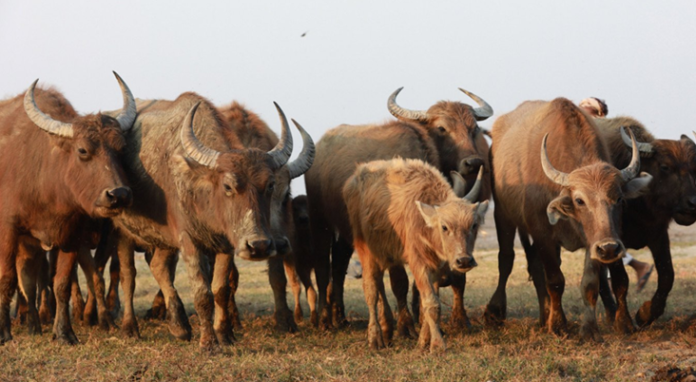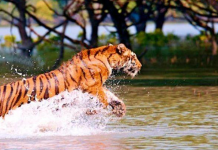We came up with key findings of a report Buffalo herding suffers in coastal Bangladesh as soil and water grow saltier, recently published in The Earth Journalism Network.
Buffaloes are in an extensive decline in the coastal regions. The key reason is this decline includes diseases, cyclones, infertility, malnutrition, and shortages of grazing land. Most Buffalo herders have converted their grazing lands into salt fields.
The Problem
People are moving away from herding buffaloes. According to the Bangladesh Agriculture Survey, from 2003 to 2019, the number of buffaloes declined by at least 51%. In the last 15 years, milk-producing buffaloes have fallen by around 60%. Now the contribution of buffalo milk to national milk production fell from 4% to 2%.
The Facts
To analyze the facts, it found that, increasing salinity, development activities and extreme weather conditions corroded the grazing land, making it hard for native buffaloes to survive. Buffalo herders have turned to producing salt, causing a decline in grazing land for buffaloes.
Why the decline
Around 75-80% of buffaloes in Bangladesh are raised in coastal and haor areas, both of which are highly vulnerable to climate change impacts. Increasing salinity has caused an acute shortage of drinking water for buffaloes and, consequently, a gradual decline in their numbers. In addition, it is one of the main reasons for the rise in diseases in buffaloes.
Anthrax, black quarter, hemorrhagic septicemia, and foot and mouth disease are also among the reasons meat and milk production have declined, and people are moving away from herding buffaloes.
A commercial shift
Buffalo has a significant connection to 4.6 crore coastal people’s lives and livelihoods. Coastal people mainly depend on buffalo rearing to meet their demand for protein and employment. Consequently, the sharp decline in the buffalo population has caused people to shift from buffalo rearing to other professions such as salt cultivation, day labour and fishing. Around 90% of herders are cultivating salt on their land now. Salt cultivation in Kutubdia has increased six-fold from 1990-2020.
Efforts to stop further decline are insufficient.
The Department of Livestock Services has tried to address the decline in the buffalo population through various schemes. The efforts rely on artificial insemination without prioritizing the breed of native buffalo and the threat of increased soil salinity.
What kind of adaptation project should be for buffalo?
Now it is time to take a buffalo adaptation project under the changing climate conditions, especially in coastal and haor regions. Only crossbreeds won’t stop the decline in the buffalo population. Unless taking conservation and improvement programmes, indigenous buffaloes will not survive. The offshore islands do not provide the required environment for the crossbreeds.
The alarming decrease in the buffalo population needs to be studied urgently to determine the connection between the declining buffalo population and climate change. Such conservation and improvement programmes should undertake to save our native buffaloes from going extinct.
Latest Posts
- Unmasking the cricket rumour mill
- A different sort of foul play
- দেশের একমাত্র ১০০% শ্রিম্প নিশ্চিতকারী বালাচাও মেন্যুফেকচারিং ব্র্যান্ড
- Renewable Energy: Huge Potentials
- Climate Migration And Health Hazards In Bangladesh – Analysis
About Zulker Naeen
Zulker Naeen is a freelance journalist, covers stories of climate change-induced food insecurity, natural calamities, and migration. As a citizen of one of the most climate-vulnerable nations, Zulker focuses his work on climate change. Zulker works with the Climate Tracker to report climate resiliency for vulnerable women and access to climate finance.
He involves in the Climate Tracker South Asia network, which improves the environmental consciousness of youth.
He is also one of the Bangladeshi to win the South Asia Fellowship under Climate Tracker, is a global media network closely works on Climate Change.
Zulker has completed the Train the Trainer: Effective Climate Change Communication, an initiative to convert this workshop resource into replicable modules, to empower qualified journalists to deliver training on the major climate journalism topics, and to establish a certification process for journalists.
Zulker has a master’s degree in Communications and a bachelor’s degree in Media Studies and Journalism from the University of Liberal Arts, Bangladesh.
He has developed courses with the support of other Climate Tracker staff. As a young climate advocate, his fellowship aims to share knowledge of climate change.








